The Growing Link Between Physical Inactivity and Children’s Mental Health
In recent years, a silent yet alarming epidemic has been brewing among children—the steady decline in physical activity. Once characterized by carefree outdoor play, impromptu games, and bicycle races, childhood today is increasingly confined to screens and sedentary routines.
According to a 2022 report by the World Health Organization (WHO), more than 80% of children and adolescents worldwide fail to meet the recommended 60 minutes of daily physical activity, a statistic that has nearly doubled over the past two decades.
According to a 2023 study published in the journal JAMA Pediatrics, children aged 8 to 12 now spend an average of 4 to 6 hours daily on screens, while teenagers spend as much as 7 to 9 hours. This sedentary lifestyle not only reduces physical fitness but also directly impacts mental well-being, contributing to emotional instability, poor social skills, and lower self-esteem..
The Current State of Children’s Physical Activity: A Decline with Serious Consequences
In recent years, children’s physical activity levels have plummeted to an all-time low, setting off alarm bells for health experts and educators alike. According to a 2022 report by the World Health Organization (WHO), four out of five children globally fail to meet the recommended one hour of daily physical activity.
The situation is no better in developed nations—data from the Centers for Disease Control and Prevention (CDC) reveals that only 24% of American children aged 6 to 17 engage in the recommended daily physical activity.
Screen time, once considered a weekend indulgence, has now become a daily staple. A 2023 study by Common Sense Media found that children aged 8 to 12 spend over 4.5 hours daily on screens, while teenagers average 7 hours.
Beyond screens, academic pressure has also squeezed out opportunities for physical activity. In many schools, physical education (PE) classes are shrinking or being eliminated altogether, replaced by more academic hours. A report from the National Institute of Health (NIH) noted that 40% of schools in the U.S. have reduced or removed PE classes to prioritize academics.
In India, where education is heavily examination-focused, children often spend their after-school hours in tuition classes, leaving little time for physical play. This imbalance between academics and physical well-being is contributing to a more sedentary generation.
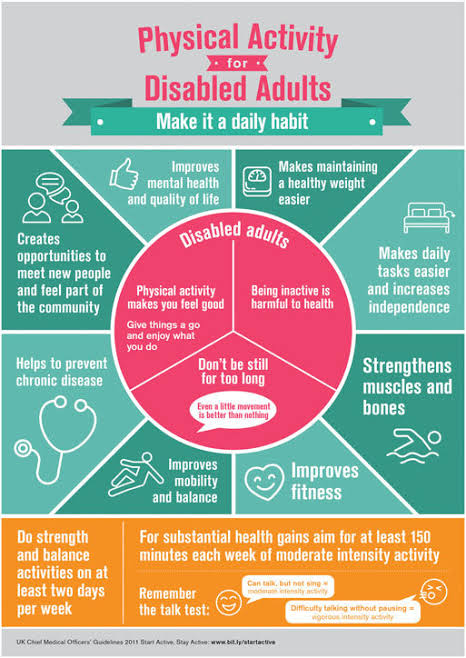
Regular physical activity significantly benefits disabled adults by improving mental health, mobility, and independence, while reducing chronic disease risks. Even small movements contribute to better well-being.
The consequences of this physical inactivity on children’s health are far-reaching. One of the most visible outcomes is the rise in childhood obesity rates. According to the World Obesity Federation, the number of children aged 5 to 19 classified as obese has risen from 11 million in 1975 to over 124 million in 2016, with the numbers continuing to climb.
Understanding the Link Between Physical Inactivity and Mental Health: A Scientific Insight
The connection between physical activity and mental health is not merely anecdotal—it is deeply rooted in science. When children engage in physical activity, their brains undergo biochemical changes that promote emotional stability, reduce stress, and enhance cognitive function.
A lack of physical activity leads to an increase in cortisol levels, the hormone responsible for the body’s stress response. Elevated cortisol, particularly over extended periods, disrupts sleep patterns, weakens immune function, and triggers chronic stress, making children more prone to emotional instability and mood swings.
The effects of physical inactivity on children’s mental health extend beyond mood regulation. Cognitive functions such as memory, attention span, and learning capacity are also affected. When children engage in physical activity, blood flow to the brain increases, promoting the growth of new neural connections and enhancing cognitive flexibility. However, sedentary lifestyles impair this process.
The link between physical inactivity and mood disorders is also well-documented. According to a 2022 study in The Lancet Psychiatry, children who engaged in less than 60 minutes of physical activity daily were 1.5 times more likely to develop depression compared to their more active peers.
The Mental Health Consequences of Physical Inactivity in Children: A Growing Crisis
The mental health consequences of physical inactivity in children extend far beyond momentary restlessness or boredom—it creates lasting emotional and psychological challenges. As children become increasingly sedentary, they experience heightened levels of anxiety and depression, reduced social competence, and poor emotional regulation.
The link between physical inactivity and rising rates of anxiety and depression in children is well-documented. When children remain sedentary for prolonged periods, their hormonal balance is disrupted, making them more vulnerable to mood disorders.
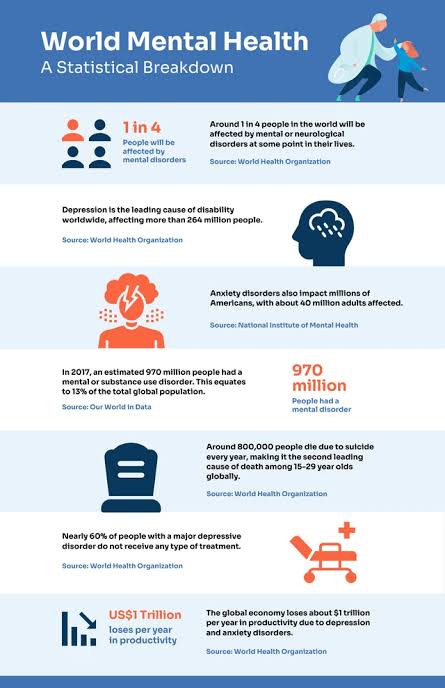
One in four people globally experiences mental health disorders, with depression and anxiety being the most common, impacting millions and affecting productivity.
Physical activity stimulates the release of endorphins and serotonin, which are known to boost mood and reduce stress. However, in its absence, cortisol—the body’s primary stress hormone—accumulates. Elevated cortisol levels over time trigger chronic stress responses, which are associated with anxiety, mood swings, and emotional instability.
A 2019 study published in The Journal of Abnormal Child Psychology found that children with low physical activity levels were 40% more likely to report feelings of loneliness and social isolation. The lack of peer interaction not only diminishes their social confidence but also exacerbates symptoms of anxiety and depression.
The Benefits of Physical Activity on Children’s Mental Well-being: A Path to Emotional Resilience
One of the most immediate and noticeable benefits of physical activity is its ability to improve mood and emotional stability. During exercise, the brain releases endorphins, serotonin, and dopamine, all of which are associated with enhanced mood and reduced feelings of sadness or irritability.
Children who engage in regular physical activity experience fewer symptoms of depression and demonstrate higher levels of emotional resilience. A 2021 study published in The Journal of Pediatrics found that children who participated in 60 minutes of moderate physical activity daily reported a 35% reduction in depressive symptoms. The researchers concluded that even light activities, such as walking or cycling, produced significant mood-enhancing effects.
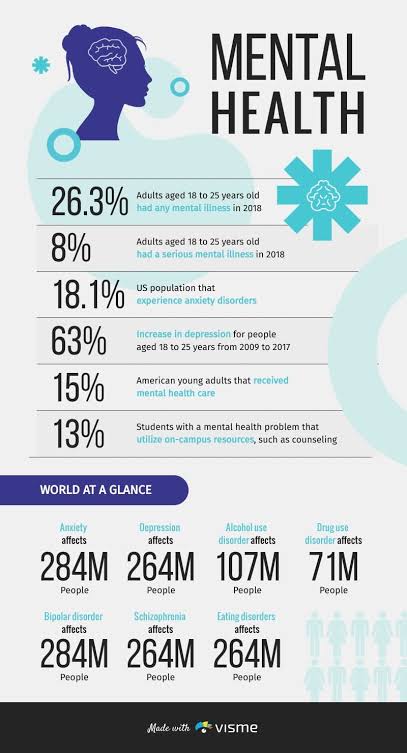
Anxiety, depression, and substance abuse disorders affect millions globally, highlighting the pressing need for accessible mental health care and awareness.
Scientific research has shown that physically active children perform better academically due to improved cognitive flexibility and executive functioning. A 2019 study published in Nature Human Behaviour found that children who participated in 45 minutes of physical activity before school demonstrated higher attention spans, faster information processing, and better problem-solving skills compared to their sedentary peers.
Strategies for Parents and Schools to Promote Physical Activity: A Collective Responsibility
As childhood physical inactivity reaches alarming levels, the responsibility of reversing this trend falls on both parents and schools. With the rise in sedentary lifestyles and screen addiction, it is no longer enough to simply advise children to “play more.”
Instead, it requires deliberate and structured efforts from both families and educational institutions to reintegrate physical activity into children’s daily routines. Through family engagement, school initiatives, and community support, children can rediscover the joys of physical play, develop stronger bodies, and enhance their mental well-being.
A 2022 study published in BMC Public Health found that children who participated in regular family-based physical activities were 46% more likely to maintain consistent activity levels into adolescence.
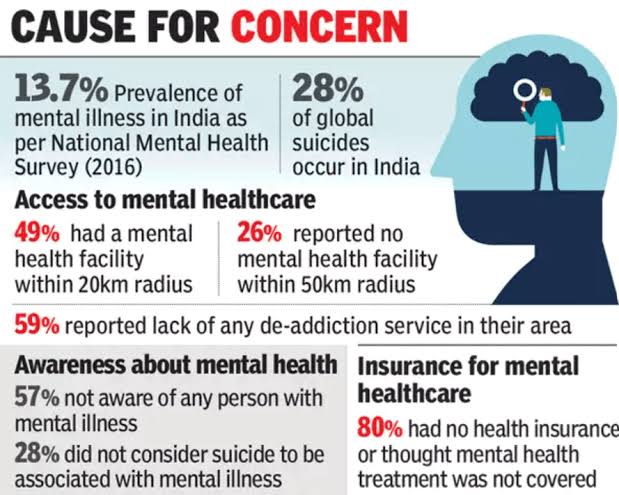
India faces a mental health crisis, with 13.7% of people affected by mental illnesses and poor access to healthcare, de-addiction services, and insurance coverage.
Parents can also encourage participation in sports clubs and hobby classes, giving children structured opportunities for regular physical activity. Enrolling children in swimming, karate, gymnastics, or dance classes provides them with not only a physical outlet but also teaches discipline, teamwork, and goal-setting.
A 2021 report by the National Recreation and Park Association (NRPA) found that children living in neighborhoods with accessible parks and safe playgrounds were 32% more likely to engage in daily physical activity compared to those without access.
Demonstrating the Impact of Physical Activity on Children’s Mental Health
As childhood mental health concerns continue to rise, several organizations and communities around the world have taken proactive measures to promote physical activity as a preventive and therapeutic solution.
From grassroots initiatives in local neighborhoods to large-scale school programs, these case studies demonstrate the transformative impact of regular physical activity on children’s mental well-being. With measurable improvements in mood, academic performance, and social skills, these real-world examples offer valuable insights into how physical activity can effectively combat mental health challenges in children.
In one of the flagship programs in Mumbai, Earth5R collaborated with local schools to introduce weekly outdoor physical activity sessions. The program incorporated play-based exercises, mindfulness walks, and group challenges. Within six months, participating schools reported a 30% reduction in anxiety symptoms and an overall improvement in children’s mood and classroom behavior.
On the international front, a highly successful school-based physical activity program in Finland has demonstrated the positive mental health effects of regular physical education. In 2016, Finland’s Ministry of Education launched the “Finnish Schools on the Move” program, aimed at increasing physical activity during the school day.
The results were remarkable. By 2019, schools participating in the program reported a 23% decrease in anxiety-related absenteeism and a 17% improvement in overall emotional well-being among students.
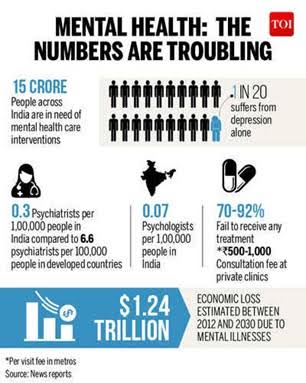
In India, mental health statistics are alarming, with a shortage of psychiatrists and psychologists, leading to a significant treatment gap.
Teachers noted that children who were previously restless and unfocused in class became more attentive and composed after engaging in physical activities. The program also led to a 10% increase in physical activity levels among students, showing that integrating movement into the academic curriculum not only promotes physical health but also enhances mental resilience and emotional stability.
These case studies from Earth5R, Finland, and India underscore a universal truth: promoting physical activity among children significantly enhances their mental well-being. From reduced anxiety and depression symptoms to improved social skills and emotional resilience, these initiatives demonstrate that movement-based programs have far-reaching benefits.
Challenges in Implementing Physical Activity Programs: Barriers to Building a Healthier Generation
One of the primary obstacles is the lack of infrastructure and resources, particularly in urban settings and underfunded schools. With cities becoming increasingly congested, children have fewer safe outdoor spaces to engage in free play.
Parks and playgrounds are often scarce or poorly maintained, limiting children’s access to safe physical outlets. According to a 2023 report by the World Health Organization (WHO), over 70% of children in urban areas lack regular access to public play areas, contributing to higher rates of sedentary behavior. In schools, the situation is equally concerning.
Many public schools, especially in developing regions, lack adequate sports facilities, playgrounds, or dedicated physical education (PE) spaces. Without proper infrastructure, even the most well-intentioned physical activity programs struggle to gain traction.
Adding to the challenge are time constraints driven by academic pressures. In many school systems, particularly in India and other Asian countries, the emphasis on academic performance often sidelines physical education.
According to a 2022 survey by the National Association for Sport and Physical Education (NASPE), 44% of schools globally have reduced PE hours to accommodate more classroom instruction, despite the growing evidence linking physical activity to improved academic performance.
This is particularly true in high-pressure educational cultures, where parents often view sports and outdoor activities as distractions from studies. According to a 2021 report by Save the Children, 60% of Indian parents considered physical activity as less important than academic tutoring, despite the mental health benefits of regular exercise.

The pandemic worsened youth mental health, with over 50% of young people reporting distress or struggling with their mental state.
The cumulative impact of these challenges is profound. Without safe spaces, dedicated time, and parental support, children are deprived of the physical outlets they need to maintain both mental and emotional well-being. To overcome these barriers, collaborative efforts from schools, parents, and policymakers are essential.
Prioritizing Physical Activity for Children’s Mental Well-being
In an era where childhood mental health concerns are on the rise, the link between physical inactivity and psychological distress is becoming increasingly clear. As this article has highlighted, regular physical activity is not merely a matter of physical fitness—it is a cornerstone of children’s emotional resilience, cognitive function, and overall mental well-being.
The scientific evidence is irrefutable: children who engage in consistent physical activity experience lower rates of anxiety and depression, demonstrate better emotional regulation, and develop enhanced social and cognitive skills. Conversely, the lack of physical movement contributes to increased stress, emotional instability, and social withdrawal, creating a vicious cycle of declining mental health.
Throughout this discussion, the devastating consequences of physical inactivity have been brought to light. The growing prevalence of screen addiction, academic pressures, and sedentary lifestyles has significantly reduced opportunities for physical play, leading to adverse effects on children’s mental health.
As we move forward, it is vital to reframe physical activity not as a secondary pastime, but as a fundamental pillar of children’s mental health. The stakes are simply too high to ignore. By embedding regular physical activity into children’s daily lives, we can safeguard their emotional well-being, enhance their social skills, and foster a generation of healthier, happier, and more resilient individuals.
FAQs: How a Lack of Physical Activity is Contributing to Rising Mental Health Issues in Children
How does physical inactivity affect children’s mental health?
Physical inactivity significantly impacts children’s mental health by increasing stress, anxiety, and depression. Without regular movement, children miss out on the release of endorphins, dopamine, and serotonin, which are essential for mood regulation. This hormonal imbalance can lead to irritability, emotional instability, and mood disorders.
Can lack of physical activity cause depression in children?
Yes, several studies have linked physical inactivity to a higher risk of depression in children. When children lead sedentary lifestyles, they experience reduced cognitive stimulation and poor emotional regulation, both of which are associated with depression. Physical activity, on the other hand, has been shown to boost mood and reduce depressive symptoms.
What are the signs that a child may be affected by physical inactivity?
Children affected by physical inactivity may display increased irritability, social withdrawal, mood swings, and low energy levels. They may also experience difficulty concentrating, disrupted sleep patterns, and increased emotional sensitivity, which are all indicators of declining mental health.
How does physical activity help reduce stress in children?
Physical activity helps reduce stress by lowering cortisol levels (the stress hormone) and stimulating the release of endorphins, which create a sense of well-being. Activities like running, swimming, or even playing outdoors can help children manage stress and anxiety more effectively.
Does physical inactivity affect children’s cognitive abilities?
Yes, physical inactivity negatively affects cognitive functions such as memory, attention span, and problem-solving skills. Children who engage in regular physical activity demonstrate better academic performance and improved cognitive flexibility, as physical movement enhances blood flow to the brain, boosting cognitive functioning.
Are children with sedentary lifestyles more likely to experience anxiety?
Yes, children with sedentary lifestyles are more prone to anxiety disorders. Lack of physical activity leads to higher stress levels and emotional dysregulation, which can trigger or exacerbate anxiety. Exercise helps release tension and stabilize emotions, reducing the likelihood of anxiety.
Why are children less physically active today?
The decline in children’s physical activity is largely due to increased screen time, academic pressures, and reduced access to outdoor spaces. Technological distractions like video games, smartphones, and streaming services have replaced traditional outdoor play, resulting in more sedentary behavior.
How does physical inactivity impact children’s social skills?
Physical inactivity limits opportunities for social interaction, leading to increased loneliness and social withdrawal. Activities like team sports and group play promote communication, teamwork, and emotional intelligence, which are essential for developing healthy social skills.
Can physical inactivity lead to sleep disturbances in children?
Yes, children who are physically inactive are more likely to experience poor sleep quality. Lack of physical exertion reduces the body’s natural fatigue, making it harder for children to fall asleep. Sleep disturbances, in turn, contribute to irritability, mood swings, and cognitive decline.
How much physical activity is recommended for children?
The World Health Organization (WHO) recommends that children aged 5-17 engage in at least 60 minutes of moderate to vigorous physical activity daily. This can include playing sports, running, cycling, or engaging in active games.
What role does physical education in schools play in mental health?
Physical education (PE) in schools plays a vital role in promoting mental well-being. Regular PE classes help children release pent-up energy, reduce stress, and develop social bonds, all of which contribute to improved emotional resilience.
Do children who exercise regularly perform better in school?
Yes, studies have shown that physically active children demonstrate better academic performance. Regular exercise improves cognitive functions, memory retention, and focus, helping children perform better in problem-solving and learning tasks.
How does outdoor play benefit children’s mental health?
Outdoor play exposes children to nature and fresh air, which has a calming effect on the mind. It also encourages imaginative play, creativity, and social interaction, reducing symptoms of anxiety, depression, and attention disorders.
Can physical activity prevent behavioral problems in children?
Yes, physical activity can help prevent and reduce behavioral issues such as aggression and hyperactivity. Children who engage in regular physical play tend to display better self-regulation, improved patience, and fewer emotional outbursts.
What types of physical activities are best for children’s mental health?
Activities that involve a mix of cardio, strength, and flexibility exercises are most beneficial. Sports, dance, yoga, swimming, and martial arts improve both physical and mental health by boosting mood, reducing stress, and enhancing confidence.
Is too much physical activity harmful for children?
While regular physical activity is beneficial, excessive exercise can lead to physical fatigue, irritability, and stress. It is important to ensure that children engage in age-appropriate activities with adequate rest and recovery time.
How can parents encourage physical activity at home?
Parents can incorporate physical play into family routines, such as weekend hikes, cycling, or playing outdoor games together. Limiting screen time, promoting outdoor hobbies, and enrolling children in sports clubs or fitness classes are also effective strategies.
Do children with mental health issues benefit more from physical activity?
Yes, children with pre-existing mental health conditions, such as anxiety or depression, benefit significantly from regular physical activity. Studies have shown that exercise reduces depressive symptoms, improves mood stability, and boosts self-esteem in children with mental health challenges.
How can schools promote physical activity to support children’s mental health?
Schools can promote physical activity by incorporating movement breaks, regular PE sessions, and outdoor learning activities into the curriculum. Organizing physical challenges, sports events, and group activities also encourages children to be more active and socially engaged.
What are the long-term effects of childhood physical inactivity on mental health?
Chronic physical inactivity during childhood can lead to long-term mental health issues such as increased risk of anxiety, depression, and emotional instability. It can also contribute to poor stress management skills, low self-esteem, and reduced emotional resilience in adulthood.
Call to Action: Prioritizing Physical Activity for Children’s Mental Health
The rising mental health challenges among children demand immediate attention, and promoting regular physical activity is a powerful yet often overlooked solution. As parents, teachers, and communities, it is our collective responsibility to prioritize movement as an essential part of children’s daily lives.
Encouraging outdoor play, reducing screen time, and integrating physical activities into school curricula are vital steps toward fostering healthier minds and stronger emotional resilience. Schools must champion physical education with the same emphasis as academics, while parents should model active lifestyles to inspire children.
Beyond the home and school, communities and policymakers must invest in safe, accessible recreational spaces, making it easier for children to engage in regular physical activities. The stakes are too high to ignore—by embedding physical activity into children’s routines, we can protect their mental well-being, nurture their social skills, and empower them to lead healthier, happier lives. Let us act now to reshape the future of childhood mental health—one active step at a time.





